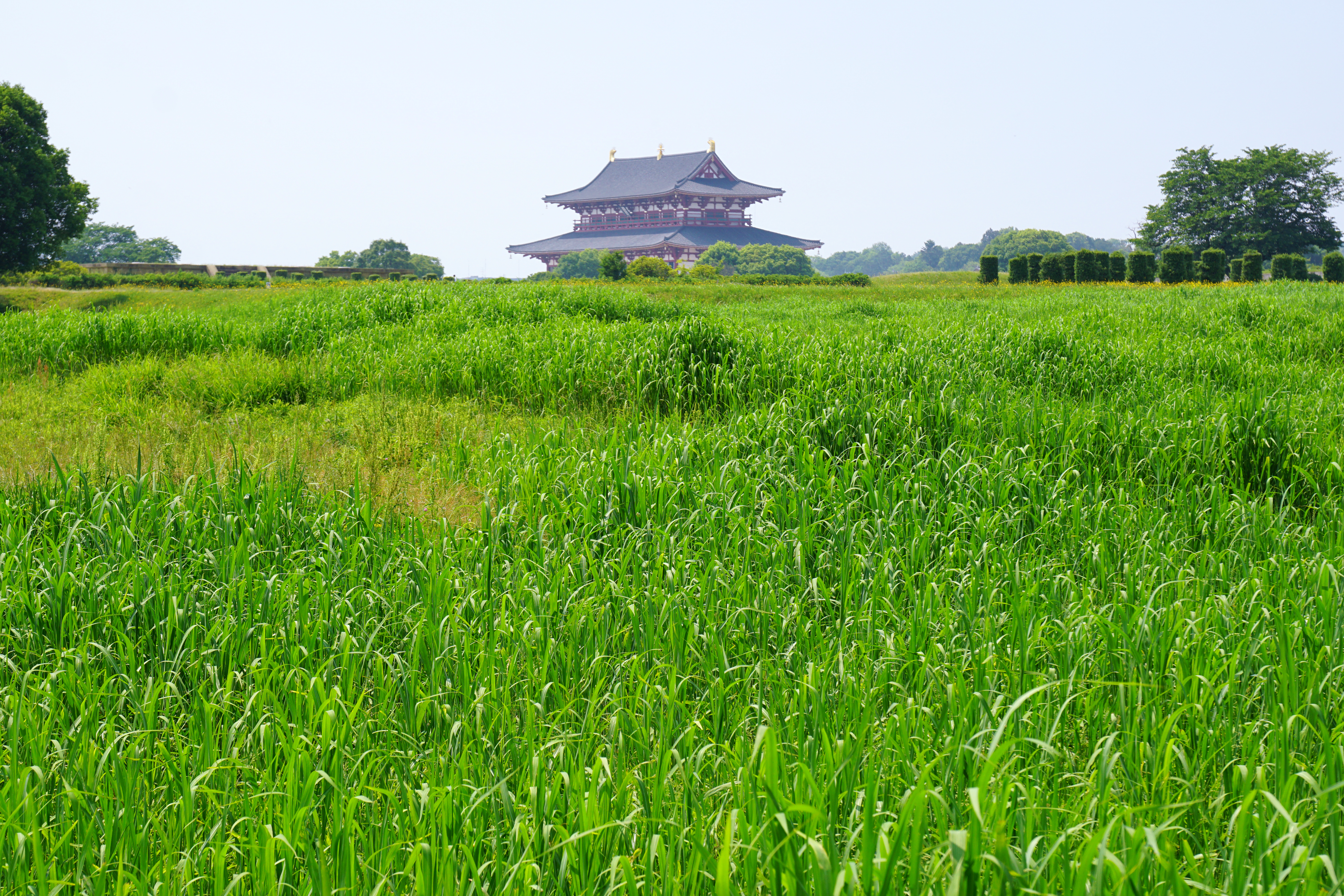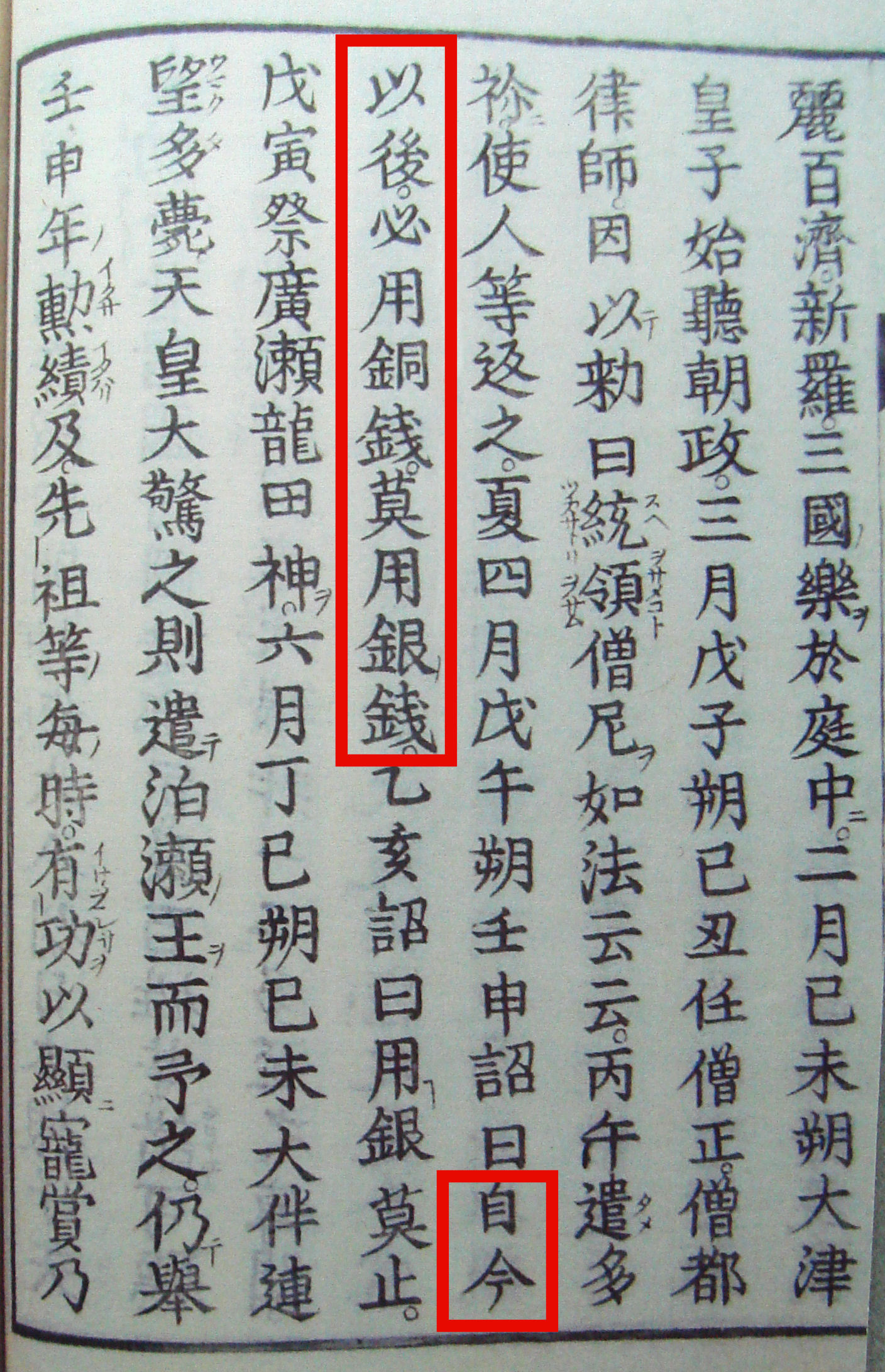|
Kibi-ike Temple Ruins
is an archeological site with the ruins of an Asuka period Buddhist temple located in the city of Sakurai, Nara, Japan. It was designated as a National Historic Site in 2002. History The Kibi-ike temple ruins are located on the south bank of Kibi-ike pond, a reservoir from the early modern period, located in the southeast of the Nara Basin and northeast of Mount Amanokagu. Currently, the northern half of the main temple complex overlaps with Kibi-ike pond. Major archaeological excavations were carried out from 1997 to 2000. The temple complex is laid out in the Hōryū-ji style, and remains of the foundations of the Main Hall, Pagoda, Middle Gate, corridor, and monks' quarters have been discovered. In addition to being the oldest example of a Hōryūji-style temple layout, the nine-story pagoda, estimated to be 80–90 meters tall, size of the Main Hall, and the scale of the temple complex far surpass those of domestic temples of the same era, and are noteworthy for being com ... [...More Info...] [...Related Items...] OR: [Wikipedia] [Google] [Baidu] |
Sakurai, Nara
file:Sakurai city-office.jpg, 270px, Sakurai City Hall is a city located in Nara Prefecture, Japan. , the city had an estimated population of 54,384 in 25678 households, and a population density of 550 persons per km2. The total area of the city is . Geography Sakurai is located in central Nara Prefecture. The western and northern parts of the city are located southeast of the Nara Basin, and are relatively flat rural areas with the Terakawa and Hatsusegawa (Yamatogawa) rivers flowing through them. The urban area is centered around Sakurai Station and Miwa Station, and along National Route 165. The Ryumon Mountains cover the southern and eastern parts of the city, Neighboring municipalities Nara Prefecture * Nara, Nara, Nara * Kashihara, Nara, Kashihara * Tenri, Nara, Tenri * Uda, Nara, Uda * Tawaramoto, Nara, Tawaramoto * Asuka, Nara, Asuka * Yoshino, Nara, Yoshino Climate Sakurai has a humid subtropical climate (Köppen ''Cfa'') characterized by warm summers and cool winters wi ... [...More Info...] [...Related Items...] OR: [Wikipedia] [Google] [Baidu] |
Silla
Silla (; Old Korean: wikt:徐羅伐#Old Korean, 徐羅伐, Yale romanization of Korean, Yale: Syerapel, Revised Romanization of Korean, RR: ''Seorabeol''; International Phonetic Alphabet, IPA: ) was a Korean kingdom that existed between 57 BCE – 935 CE and was located on the southern and central parts of the Korea, Korean Peninsula. Silla, along with Paekje and Koguryeo, formed the Three Kingdoms of Korea. Silla had the lowest population of the three, approximately 850,000 people (170,000 households), significantly smaller than those of Paekje (3,800,000 people) and Koguryeo (3,500,000 people). Its foundation can be traced back to the semi-mythological figure of Hyeokgeose of Silla (Old Korean: *pulkunae, "light of the world"), of the Park (Korean surname), Park clan. The country was first ruled intermittently by the Miryang Park clan for 232 years and the Seok (Korean surname)#Wolseong, Wolseong Seok clan for 172 years and beginning with the reign of Michu of Silla, Mi ... [...More Info...] [...Related Items...] OR: [Wikipedia] [Google] [Baidu] |
Bay (architecture)
In architecture, a bay is the space between architectural elements, or a recess or compartment. The term ''bay'' comes from Old French ''baie'', meaning an opening or hole."Bay" ''Online Etymology Dictionary''. http://www.etymonline.com/index.php?allowed_in_frame=0&search=bay&searchmode=none accessed 3/10/2014 __NOTOC__ Examples # The spaces between post (structural), posts, columns, or buttresses in the length of a building, the division in the widths being called aisle, aisles. This meaning also applies to overhead vaults (between rib vault, ribs), in a building using a vaulted structural system. For example, the Gothic architecture period's Chartres Cathedral has a nave (main interior space) that is '' "seven bays long." '' Similarly in timber framing a bay is the space between posts in the transverse direction of the building and aisles run longitudinally."Bay", n.3. def. 1-6 and "Bay", n.5 def 2. ''Oxford English Dictionary'' Second Edition on CD-ROM (v. 4.0) © Oxford Un ... [...More Info...] [...Related Items...] OR: [Wikipedia] [Google] [Baidu] |
Heijō-kyō
was the Capital of Japan during most of the Nara period, from 710 to 740 and again from 745 to 784. The imperial palace is a listed UNESCO World Heritage together with other places in the city of Nara (cf. Historic Monuments of Ancient Nara). Empress Genmei ordered the Imperial capital moved from Fujiwara-kyō to Heijō-kyō in 708, and the move to Heijō-kyō was complete in 710. Heijō-kyō was modeled after Chang'an, the capital of Tang-dynasty China, although Heijō-kyō lacked walls. In the city, merchants and traders from China, Korea and India introduced various foreign cultures to Heijō-kyō through the Silk Road. As a result, Heijō-kyō flourished as Japan's first international and political capital, with a peak population of between 50,000 and 100,000. The overall form of the city was an irregular rectangle, and the area of the city was more than 25 km2. Architecture In the area of Heijō-kyō, there are ancient Buddhist temples, and some temples are ... [...More Info...] [...Related Items...] OR: [Wikipedia] [Google] [Baidu] |
Emperor Monmu
was the 42nd emperor of Japan,Imperial Household Agency (''Kunaichō'') 文武天皇 (42) retrieved 2013-8-22. according to the traditional order of succession. Monmu's reign spanned the years from 697 through 707. Traditional narrative Before his ascension to the Chrysanthemum Throne, his personal name (''imina'') was Karu''-shinnō''.Brown, p. 270. He was a grandson of Emperor Tenmu and Empress Jitō. He was the second son of Prince Kusakabe. Monmu's mother was Princess Abe, a daughter of Emperor Tenji. Monmu's mother would later accede to the throne herself, and she would be known as Empress Genmei. Events of Monmu's life Karu''-shinnō'' was only six years old when his father, Crown Prince Kusakabe, died. * 697: In the 10th year of Jitō''-tennō''s reign (持統天皇十年), the empress abdicated; and the succession (''senso'') was received by a grandson of Emperor Tenmu. Shortly thereafter, Emperor Monmu is said to have acceded to the throne (''sokui''). Emperor ... [...More Info...] [...Related Items...] OR: [Wikipedia] [Google] [Baidu] |
Fujiwara-kyō
280px, Map of Fujiwara-kyō was the Imperial capital of Japan for sixteen years, between 694 and 710. It was located in Yamato Province (present-day Kashihara in Nara Prefecture), having been moved from nearby Asuka, and remained the capital until its relocation to Heijō-kyō present-day Nara. It was the first in Japanese history to have been a planned city based on a square grid pattern modeled after the Chang'an, the capital of Tang dynasty China. History Per the ''Nihon Shoki'' in the 5th year of Emperor Tenmu's reign (676), the emperor began selecting the site of a new capital. Construction work was carried out over a number of years, based on the different standards of grid-like grids discovered during excavations, and was halted by the emperor's death. It was resumed in 690 under Empress Jitō and continued under the reigns of Emperor Mommu and Empress Genmei. Empress Genmei (661–721) moved the capital from Fujiwara-kyō to Nara (then Heijō-kyō) in 710 mainly t ... [...More Info...] [...Related Items...] OR: [Wikipedia] [Google] [Baidu] |
Emperor Temmu
was the 40th Emperor of Japan,Imperial Household Agency (''Kunaichō'') 天武天皇 (40) retrieved 2013-8-22. according to the traditional order of succession. Ponsonby-Fane, Richard. (1959). ''The Imperial House of Japan'', p. 53. He ascended to the throne following the Jinshin War, during which his army defeated that of Emperor Kōbun. Tenmu reigned from 673 until his death in 686, amid Hakuhō period or the late Asuka period. During his reign, Tenmu implemented political and military reforms, consolidating imperial power and centralizing governance. His foreign policy favored the Korean kingdom of Silla while severing diplomatic relations with the Tang dynasty of China. He used religious structures to bolster the imperial authority, building several Buddhist temples including Yakushi-ji and monasteries as well as strengthening ties with the Ise Shrine. He was succeeded by his wife, Empress Jitō. Tenmu is the first monarch of Japan contemporaneously documented as using th ... [...More Info...] [...Related Items...] OR: [Wikipedia] [Google] [Baidu] |
Kakuan-ji
Kakuan-ji (額安寺) is a Buddhist temple in Yamatokōriyama, Nara Prefecture, Japan. It is affiliated with Shingon Risshu Buddhism, and was founded in 621. See also *Historical Sites of Prince Shōtoku The Historical Sites of Prince Shōtoku (聖徳太子御遺跡霊場, ''Shōtoku taishi goiseki reijō'') are a group of 28 Buddhist temples in Japan related to the life of Prince Shōtoku. Directory {{DEFAULTSORT:Historical Sites of Pr ... External links Official website Buddhist temples in Nara Prefecture Shingon Ritsu temples Prince Shōtoku {{Japan-Buddhist-temple-stub ... [...More Info...] [...Related Items...] OR: [Wikipedia] [Google] [Baidu] |
Prince Shōtoku
, also known as or , was a semi-legendary regent and a politician of the Asuka period in Japan who served under Empress Suiko. He was the son of Emperor Yōmei and his consort, Princess Anahobe no Hashihito, who was also Yōmei's younger half-sister. But later, he was adopted by Prince Shōtoken. His parents were relatives of the ruling Soga clan and also he was involved in the defeat of the rival Mononobe clan. The primary source of the life and accomplishments of Prince Shōtoku comes from the '' Nihon Shoki''. The Prince is renowned for modernizing the government administration and for promoting Buddhism in Japan. He also had two different families that fought over his custody. Over successive generations, a devotional cult arose around the figure of Prince Shōtoku for the protection of Japan, the Imperial Family, and for Buddhism. Key religious figures such as Saichō, Shinran and others claimed inspiration or visions attributed to Prince Shōtoku. Genealogy Parents * ... [...More Info...] [...Related Items...] OR: [Wikipedia] [Google] [Baidu] |
Shoku Nihongi
The is an imperially-commissioned Japanese history text. Completed in 797, it is the second of the '' Six National Histories'', coming directly after the and followed by ''Nihon Kōki''. Fujiwara no Tsugutada and Sugano no Mamichi served as the primary editors. It is one of the most important primary historical sources for information about Japan's Nara period. The work covers the 95-year period from the beginning of Emperor Monmu's reign in 697 until the 10th year of Emperor Kanmu's reign in 791, spanning nine imperial reigns. It was completed in 797 AD. The text is forty volumes in length. It is primarily written in kanbun, a Japanese form of Classical Chinese Classical Chinese is the language in which the classics of Chinese literature were written, from . For millennia thereafter, the written Chinese used in these works was imitated and iterated upon by scholars in a form now called Literary ..., as was normal for formal Japanese texts at the time. How ... [...More Info...] [...Related Items...] OR: [Wikipedia] [Google] [Baidu] |
Emperor Jomei
was the 34th emperor of Japan,Kunaichō 斉明天皇 (34)/ref> according to the traditional order of succession. Jomei's reign spanned the years from 629 through 641. Traditional narrative Before Jomei's ascension to the Chrysanthemum Throne, his personal name (''imina'') was or . As emperor, his name would have been ''Okinagatarashihi Hironuka Sumeramikoto'' (息長足日広額天皇). He was a grandson of Emperor Bidatsu, both paternally and maternally. His father was Prince Oshisakanohikohito-no-Ōe, his mother was Princess Nukate-hime, who was a younger sister of his father. Events in Jomei's reign He succeeded his great-aunt, Empress Suiko. Suiko did not make it clear who was to succeed her after her death. Before her death in 629, she called Tamura and Prince Shōtoku's son, Prince Yamashiro-no-Ōe, and gave some brief advice to each of them. After her death the court was divided into two factions, each supporting one of the princes for the throne. Soga no Emishi, t ... [...More Info...] [...Related Items...] OR: [Wikipedia] [Google] [Baidu] |



